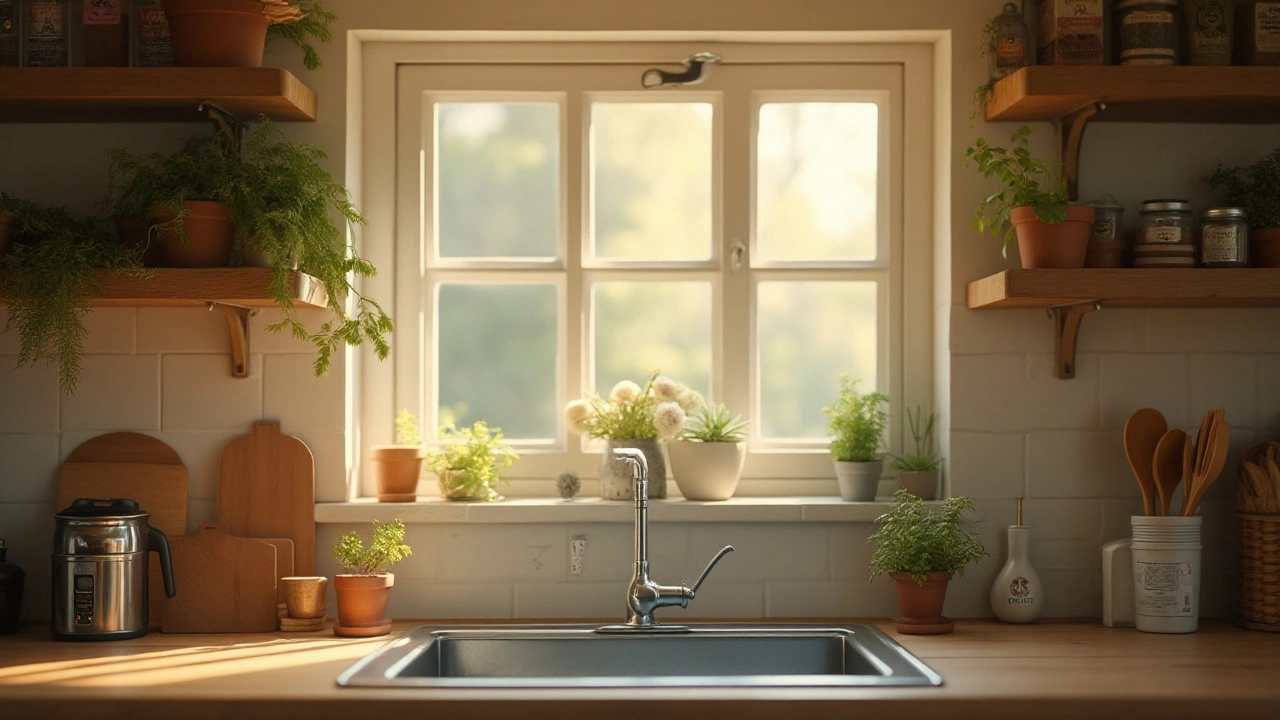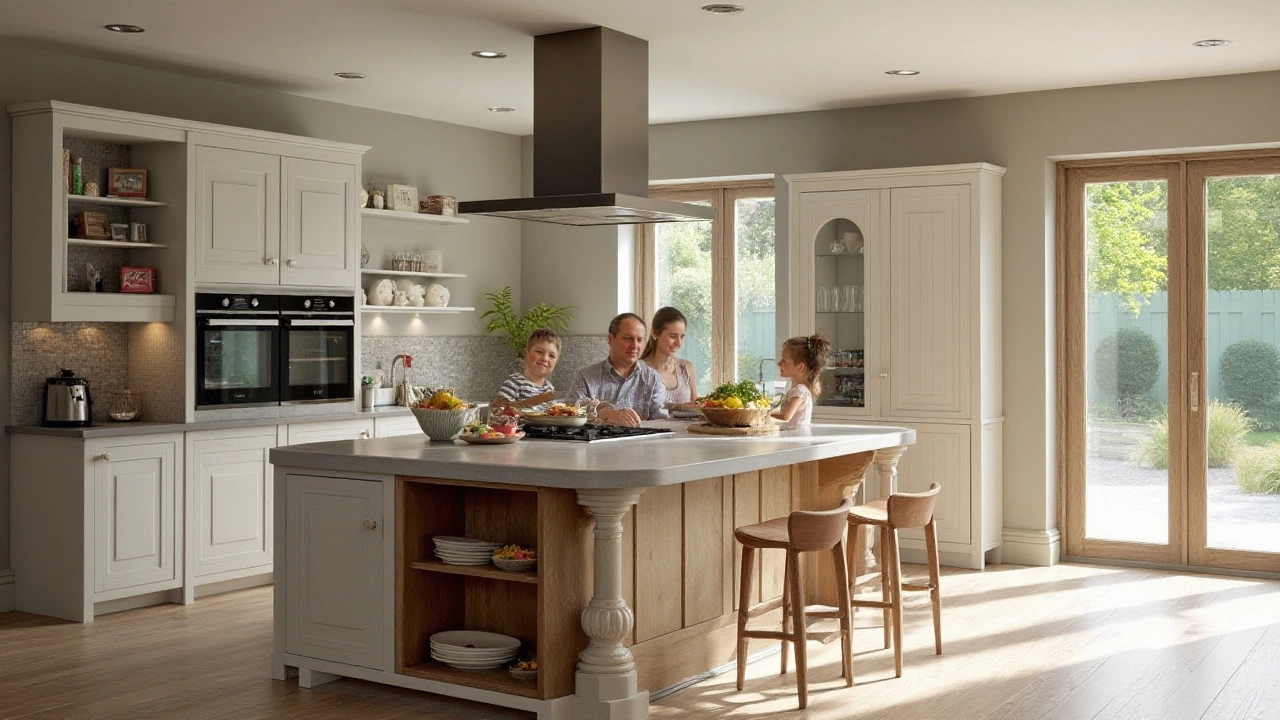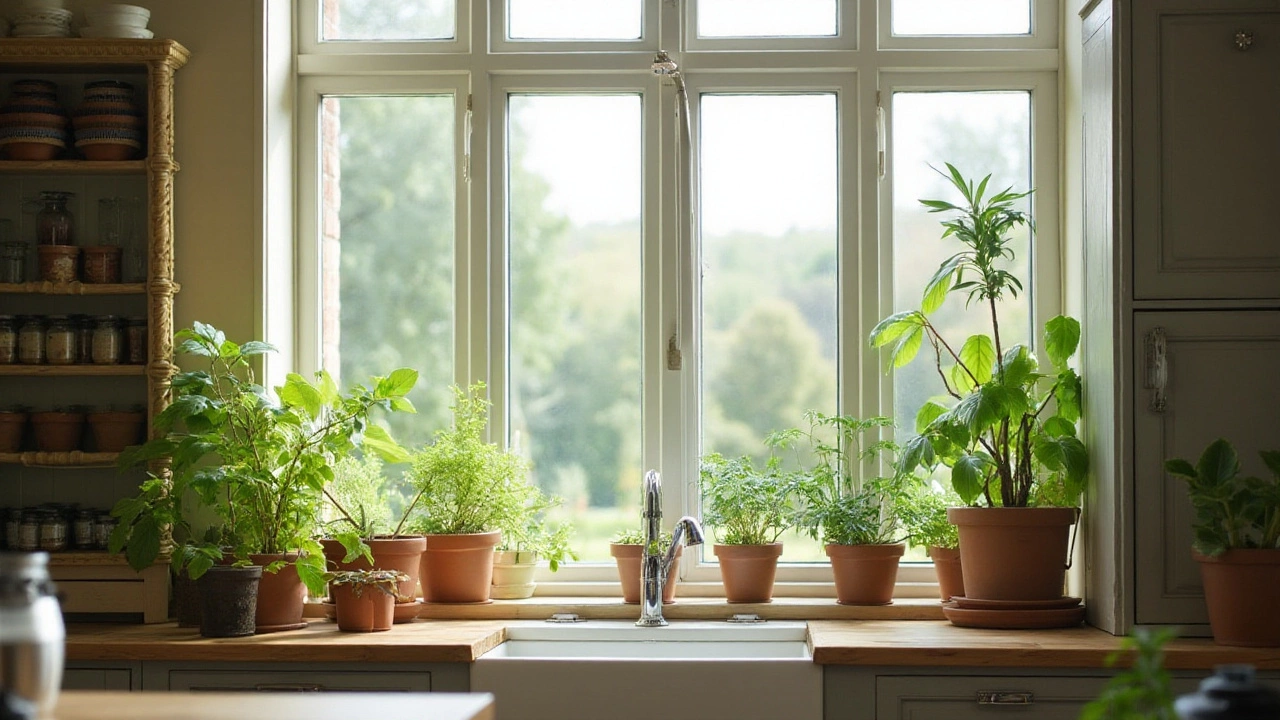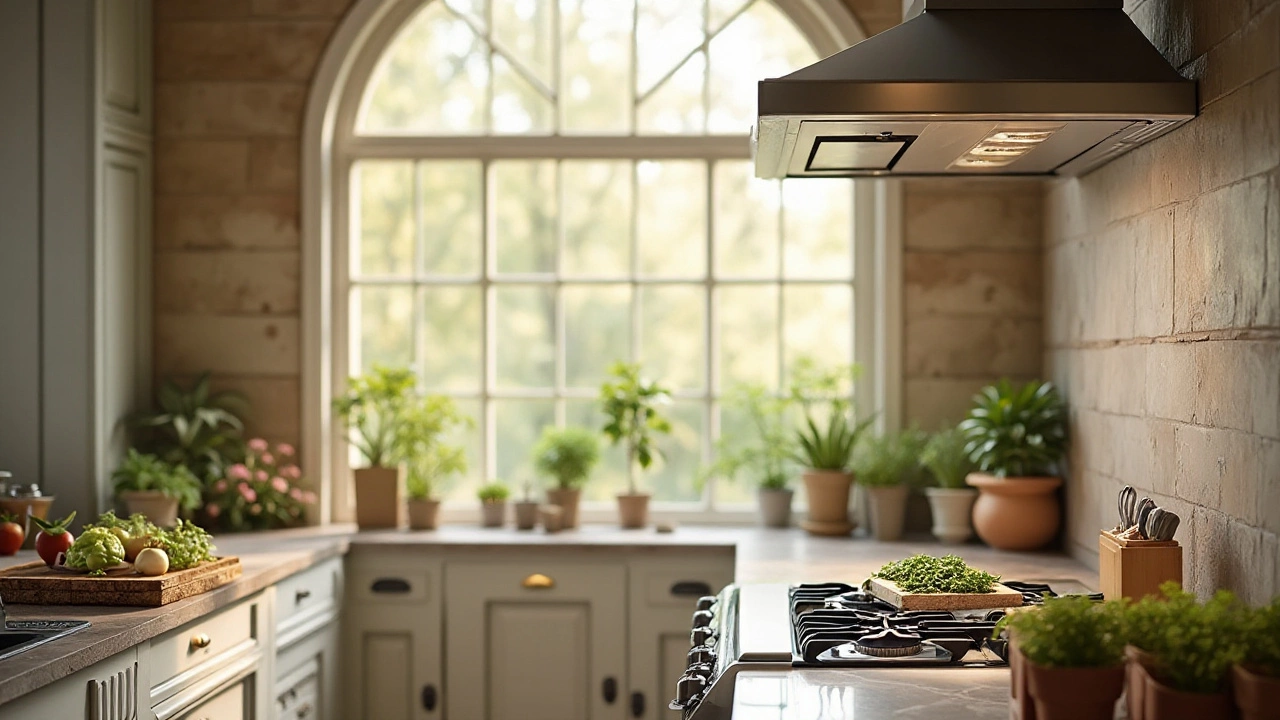Ventilation is crucial in any kitchen, not only for keeping the air fresh but also for reducing the accumulation of smoke, grease, and cooking odors. Extractor fans are a common solution, but when they need repair or replacement isn't possible, what alternatives can we explore?
In this guide, we'll delve into various options that can step in effectively, such as range hoods and natural ventilation methods. We'll also touch on some unexpected solutions like air purifiers that can surprise you with their effectiveness in maintaining good air quality. Whether you're remodeling your kitchen or dealing with an extractor fan malfunction, these insights aim to equip you with practical knowledge to ensure your cooking space remains pleasant and welcoming.
- Understanding the Need for Ventilation
- Using Range Hoods as Alternatives
- Maximizing Natural Ventilation
- The Role of Air Purifiers
- Tips for Improving Airflow and Reducing Odors
Understanding the Need for Ventilation
Every home cook knows the importance of fresh air in the kitchen. It's not just about keeping unpleasant smells at bay; proper ventilation is a necessity for ensuring the cooking space remains healthy and comfortable. Without a doubt, high humidity levels and lingering smells from cooking can make the kitchen an unwelcome spot. Over time, smoke particles and grease can cling to walls, ceilings, and cabinetry, leading to unsightly marks and potentially more maintenance work down the line.
Cooking generates a range of byproducts including steam, oil droplets, and various particles from food. These combine to create indoor air pollution that can affect your breathing over time. The need for adequate ventilation becomes even more apparent when you consider the potential health implications. Studies have shown that poor air quality indoors can exacerbate allergies and asthma symptoms. This makes it all the more crucial to address kitchen ventilation issues with effective solutions, particularly if an extractor fan isn't functioning properly.
For spaces where cooking is frequent or extensive, the concentration of harmful substances can spike significantly. This isn't just about odors; it's about ensuring safe and livable conditions. The Environmental Protection Agency (EPA) has long stressed the importance of indoor air quality, emphasizing that pollutants can be significantly higher indoors. Keeping these levels in check requires active management of ventilation, whether through mechanical or passive methods.
Historical Context of Kitchen Ventilation
Historically, kitchens were separate and often had no form of active ventilation apart from doors and windows, which posed challenges in colder climates. As time went on and cooking styles evolved, the need for specialized ventilation became evident. This led to the development of modern solutions like the range hood and extractor fans that have become commonplace in contemporary kitchens.
"The proper functioning of the ventilation is as important as any other utility in the home. A well-ventilated kitchen extends the life of your home by preserving structure elements from vapor damage," notes Professor Theodore Parks, an environmental engineer at State University.
Equipping the kitchen with appropriate ventilation not only helps in maintaining air quality but also supports energy efficiency. For instance, managing the heater and air conditioning becomes more effective when the home isn’t struggling with excess heat and moisture from cooking. This is where understanding alternatives to extractor fans can make a substantial difference, providing the performance required without compromising on aesthetics or space.
Acknowledging the role of kitchen ventilation is the first step towards healthier cooking environments. It is this understanding that drives innovation and solutions designed to meet the specific needs of different types and sizes of kitchens. Whether capturing moist air before it turns into problematic condensation or circulating fresh air through strategic openings, the goal is to maintain balance, comfort, and safety all at once.

Using Range Hoods as Alternatives
When we think about maintaining a fresh kitchen environment without a traditional extractor fan, range hoods usually come up as one of the top alternatives. Similar to extractor fans, range hoods are designed to draw smoke, steam, and cooking odors away from your stovetop. However, they offer a bit more versatility in their installation options and functionality. For those seeking a permanent solution that's easy to install and effective in operation, range hoods can be an excellent choice.
Range hoods come in a variety of designs, from wall-mounted chimneys to under-cabinet models and island hoods, which means they can fit into almost any kitchen layout. These appliances not only help to control cooking smells and airborne particles but also add an aesthetic touch to your kitchen space. Their ability to work either ducted or ductless gives them an extra edge. Ducted systems vent air outside, which is generally preferable for better air quality maintenance. However, ductless models, equipped with charcoal filters, can cleanse and recirculate air efficiently.
One of the major benefits of using range hoods is their ability to improve the kitchen's air circulation substantially. In a well-ventilated kitchen, the risk of lingering food odors, excessive moisture, and greasy build-up is significantly reduced, which can contribute to a healthier cooking environment. It’s worth considering your cooking habits when selecting a range hood. If you frequently fry foods or cook with oils and spices, investing in a powerful model could be essential. According to a home appliance expert, "A range hood that offers at least 400 cubic feet per minute (CFM) airflow is recommended for avid home cooks."
Maintenance and installation also play crucial roles when opting for a range hood. Most modern range hoods are designed to be user-friendly, with features such as easy-clean filters and accessible lighting. Keeping the filters clean is vital for ensuring that the unit performs at its best. Filters can typically be washed in a dishwasher, making maintenance straightforward. During installation, it's important to ensure the hood is positioned correctly over the cooktop, at a height that guarantees optimal efficiency without hindering cooking activities. Regular maintenance not only prolongs the life of the appliance but also ensures ongoing indoor air quality.
When it comes to aesthetics, range hoods have evolved significantly over the years. Gone are the days when functionality sacrificed design; today's range hoods often feature sleek, contemporary designs that can complement modern kitchen decor. This blend of beauty and function is not just about luxury; it caters to practical living standards, making the kitchen a comfortable place to cook without the haze and lingering smell of past meals. With technology integration, some range hoods come with smart features allowing access through phone apps, which can make controlling fan speeds and lighting a breeze. This combination of utility and design is what makes range hoods a popular choice for kitchen ventilation solutions today.

Maximizing Natural Ventilation
Creating a flow of fresh air in your kitchen using natural ventilation is not just effective but also an energy-efficient way to keep the air clean. It all starts with making the most of what you have—your windows and doors. Opening them strategically can create cross breezes, which help push out warm, stale air while pulling in cool, fresh air. This simple method can be particularly beneficial when you want to quickly reduce cooking odors and smoke after preparing a hearty meal. Paying attention to the wind direction and taking advantage of breeze patterns can significantly enhance the effectiveness of natural ventilation.
Another great way to increase air circulation is by using transom windows or vents high on the walls, which allow warm air to rise and exit. These are especially effective in kitchens with high ceilings and can dramatically improve the overall air exchange rate. Consider installing operable windows where possible, as they can be adjusted depending on the weather conditions. Persistent smoke or odor issues can often be alleviated by pairing the use of natural ventilation with the judicious placement of fans to guide airflow more precisely, a strategy that maximizes air circulation.
To take natural ventilation a step further, creating vent pathways can be a game changer. This could involve adding vent tiles or floor grilles that allow air to flow from lower levels upwards, helping maintain a constant exchange of air. Emphasizing the importance of keeping these pathways clear is crucial to ensure they function effectively. Think of it as creating an escape route for unwanted odors and warm air without resorting to mechanical methods. For those who live in temperate climates, leveraging these methods can often meet your ventilation needs without energy consumption concerns.
Engaging local climate and topographic aspects can greatly improve your kitchen’s air quality. For instance, if your home is located downhill, you might benefit more from strategies that focus on upward air flow. Consider the orientation of your kitchen and its most heavily used cooking surface in relation to dominant wind patterns in your area. Making adjustments based on these can drastically enhance air quality. It's fascinating how small tweaks, informed by understanding natural elements, can lead to a significant improvement in air movement.
Natural ventilation not only helps with odor reduction but also plays a role in regulating temperature and humidity levels. A study by the Department of Energy highlights the double-edged benefit of natural airing strategies, citing an average reduction of up to 30% in indoor humidity levels in certain climates. Such data underscores the tangible benefits of leveraging Mother Nature to keep our homes comfortable. It’s an approach that pays dividends in terms of comfort and savings, and it’s little surprise that it remains a cornerstone in many sustainable design philosophies.
"Harnessing the power of natural ventilation is not just about conserving energy. It’s a ethos that speaks to harmonizing living spaces with their surroundings," says Dr. Lisa Barnett, a leading expert in sustainable architecture. Her insight is a reminder that sometimes nature provides the best solutions, we just need to learn how to use them effectively.

The Role of Air Purifiers
In the modern home, air purifiers have emerged as vital tools for improving indoor air quality, especially when traditional methods like extractor fans are unavailable. These appliances work by filtering out pollutants, allergens, and odor particles from the air, making them an excellent alternative for maintaining a fresh kitchen environment. Besides, air purifiers are versatile and can be used in various parts of the home, adding to their appeal.
Their importance can be attributed to their ability to capture airborne particles using HEPA (High-Efficiency Particulate Air) filters, known to remove at least 99.97% of dust, pollen, mold, bacteria, and any airborne particles with a size of 0.3 microns. This level of efficiency ensures that harmful particles produced during cooking do not linger in the air, offering a cleaner and more breathable atmosphere. HEPA filters are standard in most high-quality purifiers, making them a safe bet for anyone looking to optimize their home's air quality.
Additionally, activated carbon filters play a significant role in these devices, specifically targeting odors and chemical pollutants. These filters are particularly effective in a kitchen setting, where strong cooking smells can persist long after meal preparation. By absorbing volatile organic compounds (VOCs) and neutralizing odors, activated carbon filters ensure that air purifiers are more than just a stopgap measure—they're a robust solution to maintaining a pleasant cooking environment.
"An air purifier is an essential addition to any home looking to maintain clean air," advises the American Lung Association. "It's about creating a healthier living space."
While some might argue that natural ventilation methods are sufficient for airing out a kitchen, the reality is that air purifiers can work independently of weather conditions and external pollutants. Unlike opening a window, which might let in pollen or smog, air purifiers can consistently and effectively maintain air quality. Additionally, they come in various sizes and functional designs, allowing homeowners to choose a model that fits their specific space and needs.
For those concerned about energy efficiency, many modern air purifiers are designed with this in mind, consuming minimal power while running quietly in the background. This means that you can keep your kitchen air fresh without adding significantly to your electricity bill. Plus, the quiet operation ensures that having an air purifier doesn't disrupt daily activities or create unwanted noise pollution.
Moreover, using an air purifier is straightforward, often requiring minimal setup and maintenance. Most devices come with user-friendly interfaces, and the only regular upkeep needed involves changing filters, typically every six to twelve months, depending on the usage and model. In some cases, these machines also come equipped with air quality sensors that can automatically adjust settings based on pollution levels, ensuring optimal performance at all times.


